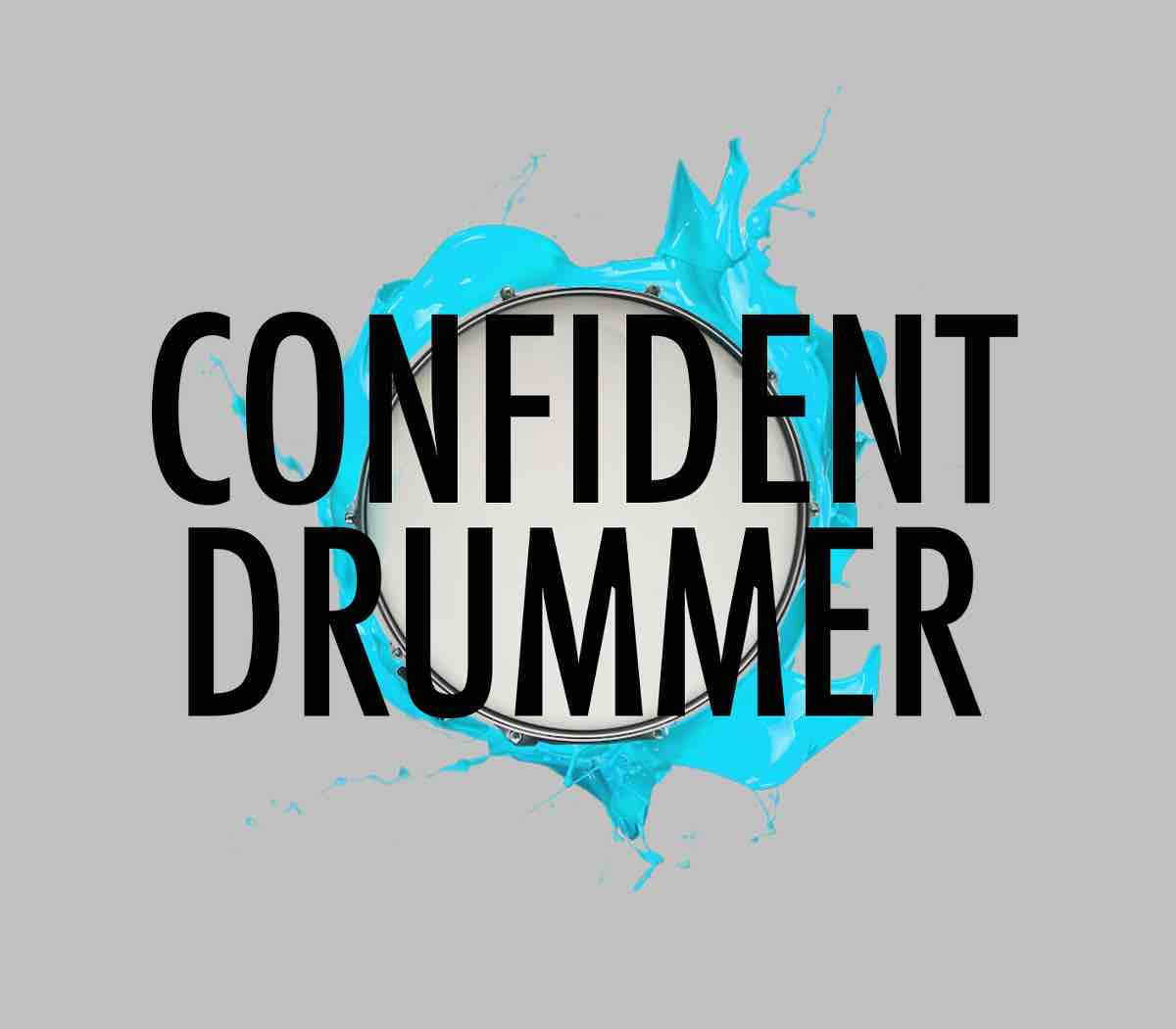Today we are going to explore the single most powerful tool at our disposal when it comes to perfecting our drumming skills: recording our performances.
No matter what we are working on, if we want to monitor our actual improvement, the feedback allowed by recording and listening back is priceless.
To achieve any goal, the most important tool we need is a feedback mechanism that allows us to know not only when we have reached our destination, but more importantly what effective adjustments we need to make while we are still finetuning the course of action.
In dealing with music and drumming this is only possible if we put ourselves in a position to listen to what we are doing, and therefore check ‘from the outside,’ objectively, what our performance actually sounds like.
One thing I have discovered over the years, making music and especially teaching, is that there is a significant gap between how we think we play and how we actually sound.
And that gap unfortunately is almost always negative. In other words until we listen back, and thus have a way to verify what our performance is really like, we all have a tendency to convince ourselves that we sound much better than we actually do.
The standard assessment provided by in the moment evaluation, plus what others who have heard us play say, although helpful, takes a much longer time to bring meaningful results.
Recording and listening back is therefore a powerful shortcut that helps us bridge this gap, precisely because it allows us to make quick, constant and repeated adjustments based on the strong feedback we get by relistening immediately after playing.
The more we record and listen back, the more the difference between perceived performance and real playing diminishes, thanks to the reinforcement of a series of increasingly more accurate internal references.
Over time this feedback will ensure that we are able to know with greater reliability, and already in real time in the middle of a performance, whether what we are playing meets the desired quality level.
In practice we will be gradually closing that gap, until the way we actually play and how we think we play, as we gain experience, eventually match up.
Here you can download the free PDF version of this article if you like:
Now that we know how important it is to do it, let’s explore a number of ways to record ourselves:
– While playing on our own: let’s record ourselves playing freely, with no metronome. Let’s listen back and check how smooth our performance is and whether there are noticeable tempo fluctuations.
It’s crucial that we listen back immediately after playing, so that we can easily remember, in spots where we notice something weird, how we felt while performing that passage, and thus begin to associate specific sensations to certain effects on our timing.
Perhaps right before a fill we tend to speed up a little, and thanks to the feedback we learn to identify the cause in a tension that comes up just before playing it.
Or at slow tempos we lay back way too much and end up dragging, and so we realize we need to calibrate the right amount of energy to stay on the backside of the beat while never losing it.
– While playing alone, along with a metronome: the same applies here, with the difference that with the click all our tendencies and imperfections are mercilessly exposed.
If after a certain complex rhythmic figure we have to hit the brakes because we realize that we pushed ahead of the beat, then it’s clear that there is some work to do.
Let’s try to listen back both leaving the click on and also muting it in the mix, so that we can get an idea of the way our corrections sound externally.
We are going to realize that if we constantly chase the metronome the result will be unbearable to listen to, while if we trust our inner pulse, lead, and in case of small imperfections apply the micro-corrections technique, with very subtle and gradual adjustments, the fluctuations will be hardly noticeable.
And, most of all, we will be taking responsibility for the tempo, whether perfect or imperfect, rather than delegating it to an external instrument.
– While playing along with a record: this little-used modality is actually crucial. We are doing great if while playing we no longer hear our Snare Drum but the one on the record, and if we almost seem to disappear under the original drum track.
That’s how we know we are perfectly immersed in the song. It’s important to pay attention to the interaction with all other instruments, especially the bass, and focus on creating a groove along with the recorded band, feeling as if we were actually playing with them.
When listening back let’s especially make sure that smoothness and feel are okay, with no flams with the original recording.
Also, let’s work on a piece until we master it, are clear about the details involved in playing it well, and feel that our recorded parts groove really hard.
If we solo the Drum Set, and listen back to it as it is, it should already sound irresistible and make us move.
– At rehearsal: we can use our smartphone or better yet a portable digital recorder with a good microphone, such as a Zoom. We may try this experiment: let’s record a song and then listen back to it with everyone else. It’s going to be immediately obvious what works and what needs to be fixed.
The hard part in this case lies in being lucky enough to play with people who are mature, open to constructive criticism, and ready to recognize their shortcomings, so as to challenge themselves to improve and contribute to the overall level of the band.
All of which, of course, we have to do first in regard to our own playing. By listening together like this, it’s literally possible to accomplish a week’s worth of work in a two-hour rehearsal.
– Live: this is one of the most effective modalities. Probably the most crucial of all. It allows us to immediately assess the imperfections and performance level of each member of the band.
Most importantly, there is nothing more revealing about how we really sound. Listening back to an entire concert, the same night or the day after the performance, is as effective as countless hours of drum practice.
With all sensations still vivid we can have an incredibly accurate measure of how sometimes we feel one way but actually sound quite another. It’s a humbling lesson, every time, and on the return trip after a live show I never miss a chance to relisten to what I’ve done.
In doing so, I understand in an instant what I need to correct, what I can do differently, where to push harder, where I overdid something, where I thought it wasn’t working and surprisingly it was perfect, and vice versa.
It’s also helpful to have some external feedback: a teacher, bandmates, or even someone from the audience, who can give us a genuine, alternative, and knowledgeable perspective on our performance and timing.
– In the recording studio: in this context it’s obvious that we are listening back carefully. When making a record half of the work is recording and the other half is listening again and again, so that we can choose, redo, experiment, edit, until we get the performance that will end up in the final mix.
When playing in a studio, everything we have ever learned, and everything we are in that moment, is channeled into the take we are recording. It’s an accurate picture of what and how we actually are, musically, as a drummer, and even as a person. The most constructive way to play in the studio is to relax and balance the mental focus and rational component of the performance with the instinct and emotion of the music.
What already works in our playing and timing, and what instead needs to be refined, will be exactly the same regardless of how we play a particular take.
It’s counterproductive to try too hard and be a perfectionist in the studio. It’s a lot more effective to simply focus on learning and on being proactive.
And if we notice that we need to improve something, we can simply make a mental note for our future practice sessions. Meanwhile, the goal is to give our best, especially in the first few takes, which are the most spontaneous, intense and representative ones.
We will analyze things and draw conclusions at the end of the day, making the most of the experience and using it to clearly show us what to improve about our Timing, Feel, and Groove.
All these methods are very good for checking the level of our timekeeping skills and of course all other aspects of our drumming as well.
We have talked about recording by implicitly referring to audio content, but we can extend the value of this feedback channel to the visual level as well, by making videos in each of the modalities discussed.
How is our posture, how relaxed are our motions, what happens to our body when we play well, or poorly?
Watching back our playing can easily multiply the quality and quantity of information available to analyze our performance.
Today the ability to record video is within anyone’s reach, so let’s experiment with this medium as well, and combine it with the audio component.
Related resources:
‘In Session – How To Sound Great On Records’
‘‘Click & Timing’ – Altitude Drumming – Volume 6’




















